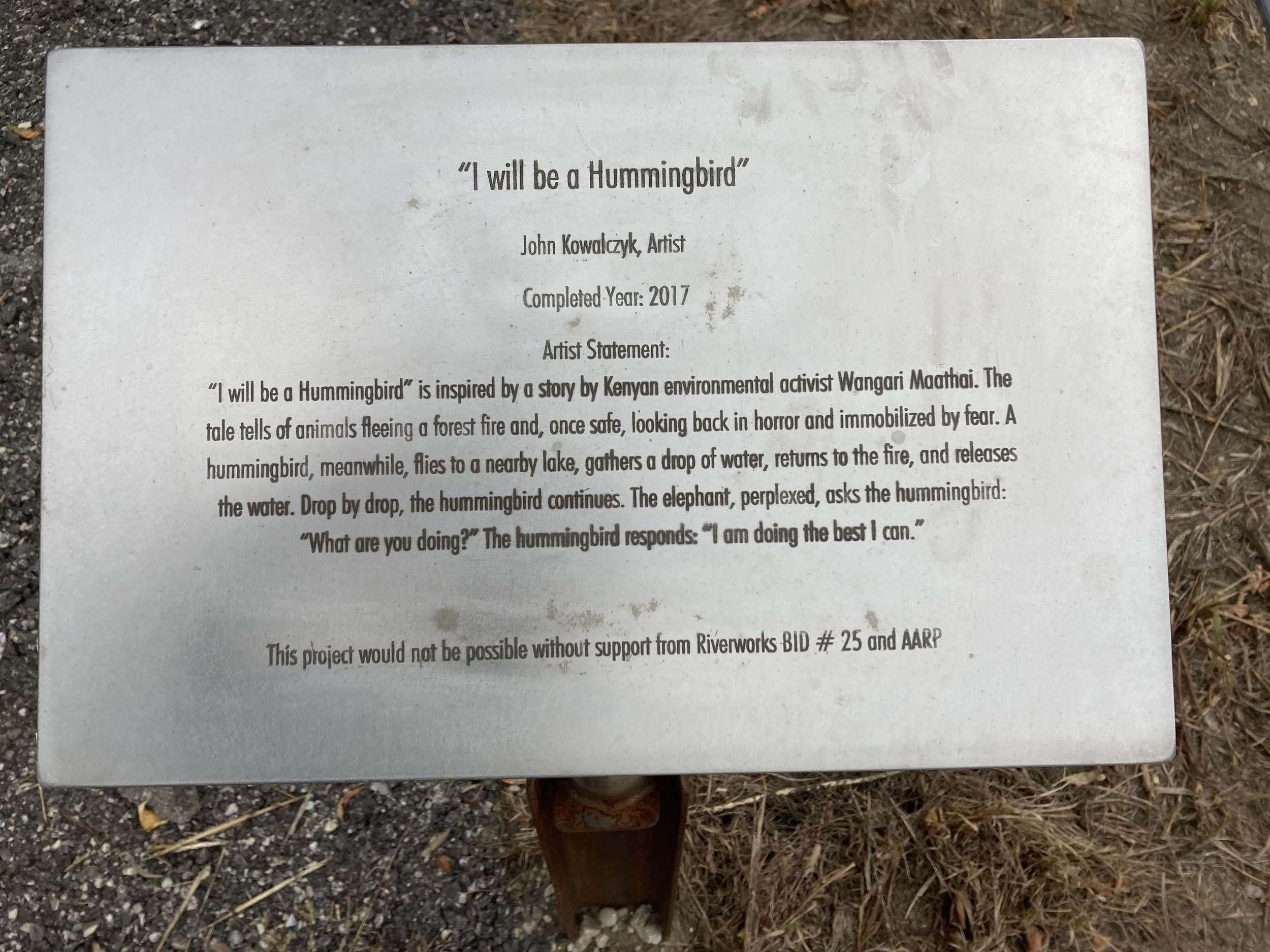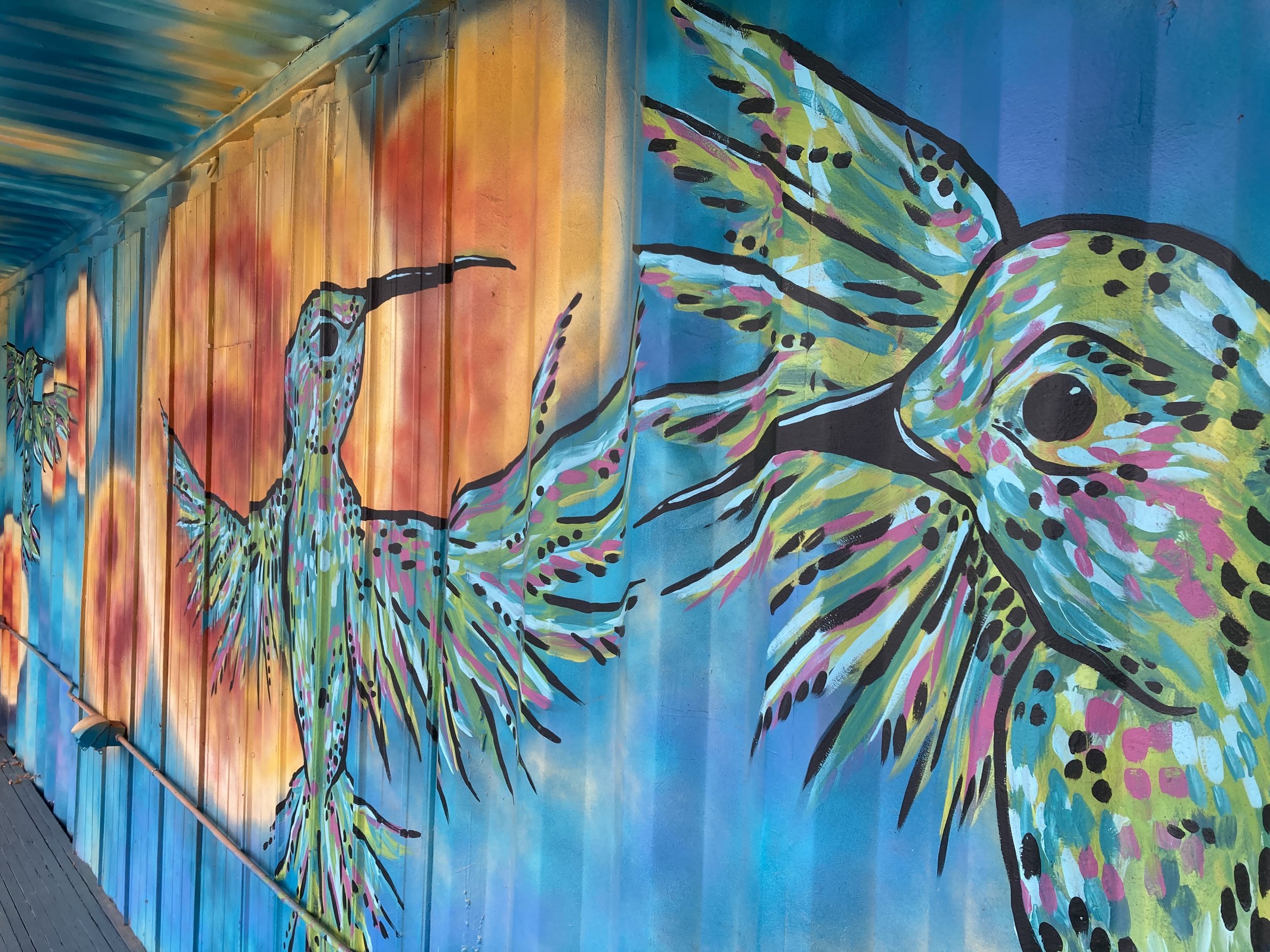Mike Trokan
Offering a Guiding Lens for
the Beerline Trail
Meet Mike. Mike Trokan is a Riverwester who volunteers as part of Guiding Lens, a community advisory service that supports the development of the Beerline Trail as a placemaking resource to connect Harambee and Riverwest residents.
As one of the group’s co-chairs, Mike represents Riverwest while another resident represents Harambee and another represents the business district.
Mike lives on N. Dousman Street, just a short walk away from the Milwaukee River that flows along the Riverwest neighborhood’s eastern flank. Mike has lived in Riverwest for 30 years but he grew up farther upstream—on 50th Street on Milwaukee’s north side near Lincoln Creek, which flows into the Milwaukee River in Lincoln Park. The oldest of five brothers, Mike recalls summer days spent exploring the creek, bringing home frogs, turtles, and hellgrammites that the boys’ mother encouraged them to re-release into the urban wild. These days Mike reflects that he still derives a sense of peace from the urban wilderness along the Milwaukee River Greenway. On any given day here he may spy deer or herons. He says he feels transported far from the city even though he is walking through its heart.
In retirement, he brings the same humble zeal for helping to elevate communities that he brought to his former work with the homeless, urban poor, and nonprofits including Riverwest-based Peace Action Wisconsin. Through Guiding Lens, Mike and other neighbors provide citizen input to Riverworks, the local business and community development organization, about Beerline Trail development including the proposed B-Line Park and art along the trail. The volunteers also participate in monthly cleanups, events, monthly meetings. The advisory group even supported a plaque that annotates the artwork of John Kowalczyk at Hummingbird Plaza—located at the southeast corner of Holton and Townsend just north of the Family Dollar—where hummingbirds painted in vivid colors flit across a shipping container retrofitted into a performance stage.
“A lot of people look at this and they thought, ‘Oh, hummingbirds, they’re pretty,’ but they didn’t understand the story behind it. It’s based on an African fable. There’s a forest fire. All the animals flee the forest. They’re standing on the other side of the river and they see a hummingbird coming and dipping its beak in the river, flying back, dropping a few drops of water going back and forth. And the elephant says, ‘What are you doing? You’re not going to be able to stop the fire.’ And the hummingbird says, ‘I’m doing what I can,’” Mike says. “So, I think just having that plaque there adds a whole new dimension to this plaza here and this artwork—It's not just something beautiful. It's there to inspire people that we all should be doing what we can to make this world a better place, and this Beerline a better trail.”
The moral of the fable seems especially true considering the daunting challenge posed by climate change and how individuals and communities choose to respond in the face of tough odds.
A plaza comprised of gray porous pavers spreads out in front of the stage. The area beneath the pavers is designed with a holding capacity of 6,370 gallons, according to Riverworks’ Amy Sorenson. When combined with the adjacent bioretention basins, native plantings, and stormwater trees, the entire Hummingbird Plaza is designed to hold up to 18,000 gallons of water on site. This includes stormwater flowing from the neighboring Riverworks Lofts building behind the site. The green infrastructure makes a small but meaningful difference in reducing the volume of water flowing into the combined sewer during heavy rains, which in turn supports the whole region’s environmental health and the quality of Lake Michigan waters, the source of Milwaukee’s drinking water. Each green infrastructure installation is like the hummingbird’s water droplet in the story—making a small but aspirational contribution to the whole.
While the green infrastructure and plantings along the former rail line provide water and environmental benefits, Mike sees the larger benefit of the Beerline as a community connector that can unite and heal across racial, societal, economic, and built geography divides that separate Milwaukeeans from one another.
Holton is not just a busy street. Although both neighborhoods occupy the 53212 Zip Code, the geographic divide between Harambee and Riverwest also correlates with demographic divides. West of Holton, 98% of residents are people of color; to the east, 35%. West of Holton, the median household income is over $17,191; to the east, it is over $41,779. West of Holton, 10% of residents hold post-secondary degrees; to the east, that figure is 55%. The numbers are according to American Community Survey data for 2012-2016.
“The thing about the Beerline is it crosses two neighborhoods: Riverwest and Harambee,” Mike says. “Oftentimes, Holton [Street] is seen as a divider between our neighborhoods. The Beerline goes across Holton and goes through both neighborhoods. So, it has the potential to bring the neighborhoods together—really connect the neighborhoods.”
Riverworks has programmed the public trail with concerts, activities, and events like the Beerline Shuffle. Mike is excited about the way these and future events can pull people from both neighborhoods together. He imagines that Guiding Lens could evolve into a sort of friends group for the Beerline Trail.
“Guiding Lens is composed of residents from Harambee and the Riverwest neighborhood. We provide citizen input into the development of the Beerline Trail here. We work through Riverworks and the other groups that are developing the Beerline. So, we’re involved in monthly cleanups, working to develop an art guide for the Beerline, helping to support events on the Beerline right now, and in the future help to start to develop some of our own projects and events along the Beerline, too,” Mike says. “There’s just so much potential for it.”
“I see us engaged long-term with this, not just cleaning up the Beerline but developing more projects and more events along the Beerline that bring people together.”




